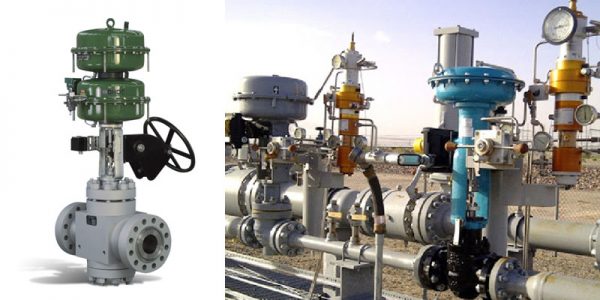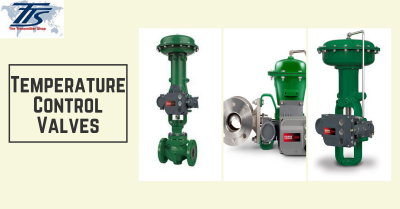Innovative Control Valves: Enhancing Accuracy and Reliability
Innovative Control Valves: Enhancing Accuracy and Reliability
Blog Article
Achieve Seamless Integration and Control With Quality Building Automation Controls
In the world of modern building administration, the importance of high quality structure automation controls can not be overstated. Welcoming top quality building automation controls is not merely an issue of ease yet a strategic imperative for organizations aiming to optimize their facilities' performance and sustainability.

Evolution of Structure Automation Controls
Throughout the past few years, the evolution of building automation controls has actually significantly transformed the method structures are taken care of and run. Developing automation systems primarily focused on basic features such as regulating heating, air flow, and air conditioning (COOLING AND HEATING) systems. As technology progressed, these controls have become much more advanced, enabling for a wider array of building systems to be incorporated and managed centrally.
The evolution of developing automation controls has seen a change towards even more intelligent systems that can adapt to altering problems in real-time. This flexibility is vital for maximizing energy performance and ensuring owner comfort. In addition, modern structure automation controls currently supply attributes such as predictive maintenance, remote tracking, and information analytics, allowing center managers to make data-driven choices to enhance structure efficiency.

Advantages of Top Quality Integration
The innovation in building automation manages towards even more intelligent systems has actually emphasized the substantial benefits of high quality integration in enhancing structure operations and improving total performance. Quality assimilation of developing automation controls uses a number of crucial advantages. To start with, it results in boosted power effectiveness by allowing various systems to function together effortlessly, ensuring optimum efficiency and decreasing power wastage. Secondly, high quality integration enhances passenger comfort and productivity by allowing customized control over ecological setups like air, lights, and temperature level quality. This personalization can result in an extra comfy and conducive working or living atmosphere. Additionally, high quality assimilation simplifies upkeep and troubleshooting processes, as all systems are adjoined and can be kept an eye on and controlled from a centralized interface. This central control additionally supplies better presence and understandings into building efficiency, enabling positive upkeep and optimization strategies. Generally, the advantages of high quality assimilation in structure automation controls are indisputable, offering enhanced performance, comfort, and functional effectiveness.
Boosted Individual Experience and Availability
Enhancing individual communication with structure automation manages with intuitive design and enhanced ease of access raises the overall experience for passengers and center supervisors alike. By concentrating on customer experience, developing automation systems can end up being more effective and easy to use. Instinctive user interfaces, clear navigating, and personalized settings empower users to interact with the controls conveniently and effectively.
Ease of access features play a vital duty in making certain that all individuals, consisting of those with impairments, can make use of the building automation manages effortlessly. Including functions such as voice visit this website commands, tactile switches, and color-contrasted display screens can enhance accessibility and make the controls much more inclusive.
In addition, boosted customer experience results in higher individual satisfaction, increased performance, and far better decision-making. Residents can change environmental setups according to their choices, while center managers can effectively take care of and check building systems - control valves. In general, focusing on user experience and accessibility in structure automation manages contributes to an extra effective and smooth structure setting for all stakeholders included
Sustainable Practices Via Automation

In addition, automation can assist in the assimilation of renewable resource resources such as photovoltaic panels or wind generators into building procedures. By instantly readjusting power usage based on the availability of eco-friendly energy, structures can even more minimize their dependence on non-renewable sources. This seamless combination of lasting techniques not just benefits the setting however additionally enhances the general operational effectiveness and cost-effectiveness of the structure. With automation, structures can line up with modern-day sustainability objectives and add to a greener future.
Future Trends in Building Control Equipment
In anticipation of evolving and advancing modern technologies sustainability techniques, the trajectory of structure control systems is poised to accept ingenious services and transformative methods. One prominent trend shaping the future of building control systems is the increased assimilation of Expert system (AI) and maker discovering. These modern technologies enable buildings to adapt in real-time to altering problems, optimizing energy intake and enhancing convenience for owners. In addition, the Internet of Things (IoT) is transforming building control systems by connecting sensing units and tools to streamline operations and enhance performance.
One more vital trend is the focus on cybersecurity measures to shield against possible dangers to building automation systems. As buildings come to be a lot more interconnected, making certain robust cybersecurity protocols will certainly be necessary to secure delicate information and prevent unapproved access.
Moreover, the shift towards cloud-based systems is acquiring energy, enabling streamlined control see here and remote access to structure systems. This facilitates much easier monitoring, maintenance, and updates, boosting the overall performance and versatility of structure control systems. As innovation remains to breakthrough, these trends are anticipated to form the future landscape of building automation controls, driving advancement and sustainability in the developed environment.
Final Thought
Future trends in building control systems are most likely to concentrate on further improving automation abilities for boosted energy effectiveness and general performance. It is necessary for building owners and drivers to prioritize the adoption of top quality structure automation controls to optimize structure procedures and attain have a peek at these guys lasting sustainability objectives.
In the world of contemporary structure management, the value of quality structure automation controls can not be overemphasized. In general, the development of building automation manages proceeds to drive technology in the structure administration sector, providing brand-new opportunities for creating smarter and more sustainable buildings.
The development in building automation controls in the direction of more smart systems has underscored the considerable benefits of quality integration in maximizing structure procedures and boosting total performance. Overall, focusing on customer experience and access in structure automation controls adds to an extra efficient and smooth structure environment for all stakeholders involved.
It is essential for building proprietors and operators to focus on the adoption of quality structure automation controls to maximize building operations and achieve long-lasting sustainability goals. - control valves
Report this page